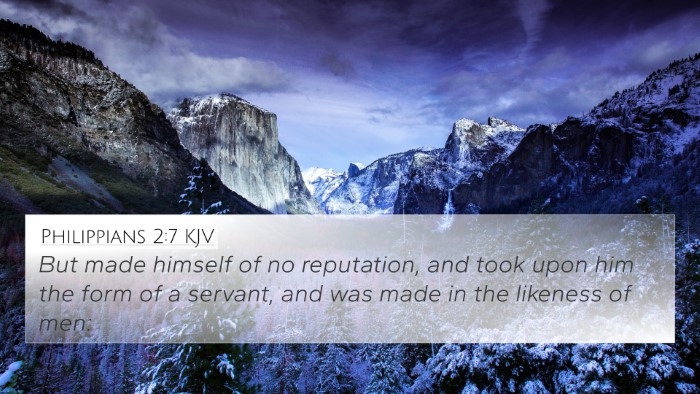Understanding Matthew 3:15
Matthew 3:15 states, "But Jesus answered him, "Let it be so now, for thus it is fitting for us to fulfill all righteousness." Then he consented." This verse holds significant meaning in the context of Jesus' baptism by John the Baptist and illustrates the necessity of Jesus’ actions in relation to divine righteousness.
Commentary Insights
This verse highlights several theological and interpretive themes, analyzed through the perspectives of public domain commentaries:
-
Matthew Henry:
Henry notes that Jesus’ willingness to be baptized, even though He had no sin to repent of, demonstrates His commitment to identify with humanity and fulfill God's plan of salvation. His act represents the fulfilling of righteousness, signifying the importance of obedience to God's will.
-
Albert Barnes:
Barnes points out that Jesus' response emphasizes the importance of His ministry and mission. By allowing John to baptize Him, Jesus symbolizes the avenue through which believers would later experience their own baptism and repentance, thus linking His work to the broader themes in the Gospels.
-
Adam Clarke:
Clarke explicates that the phrase "fulfill all righteousness" indicates Jesus’ role in upholding God’s law and prophecies. His baptism serves both as an example for future believers and fulfills the ceremonial and moral aspects of the Law, preparing the way for His redemptive work.
Thematic Connections
This verse is intertwined with several critical themes present in the Bible:
-
Righteousness:
The concept of righteousness is central to understanding the fulfillment of God’s promises throughout Scripture. This verse emphasizes how Jesus embodies perfect righteousness.
-
Obedience to God's Will:
Jesus’ compliance in being baptized, even at the behest of John the Baptist, showcases His submission to God’s divine plan, mirroring the obedience exemplified in other scriptural instances.
-
Identification with Humanity:
Through baptism, Jesus aligns Himself with sinners, illustrating God's love for humanity and His desire to redeem it.
Bible Verse Cross-References
The following verses offer related themes and ideas that connect with Matthew 3:15:
- Romans 10:4 - "For Christ is the end of the law for righteousness to everyone who believes." - Demonstrates the fulfillment of the Law in Christ.
- John 1:29 - "The next day John saw Jesus coming toward him, and said, 'Behold! The Lamb of God who takes away the sin of the world!'" - Affirms Jesus' role in salvation.
- Matthew 5:17 - "Do not think that I came to destroy the Law or the Prophets. I did not come to destroy but to fulfill." - Jesus’ affirmation of His mission.
- Isaiah 53:11 - "Out of the anguish of his soul he shall see and be satisfied; by his knowledge shall the righteous one, my servant, make many to be accounted righteous." - Prophetic reference to Christ’s sacrificial work.
- Hebrews 4:15 - "For we do not have a high priest who is unable to sympathize with our weaknesses, but one who in every respect has been tempted as we are, yet without sin." - Indicates Jesus’s identification with humanity.
- Luke 3:21-22 - "Now when all the people were baptized, and when Jesus also had been baptized and was praying, the heavens were opened..." - Provides context to Jesus’ baptism.
- 2 Corinthians 5:21 - "For our sake he made him to be sin who knew no sin, so that in him we might become the righteousness of God." - Illustrates the theme of righteousness through Christ.
Cross-Referencing Biblical Texts
Cross-referencing helps to draw connections between various scriptures, enhancing our understanding of themes in the Bible. For those studying the word of God, tools for Bible cross-referencing, such as a Bible concordance or cross-reference study guides, can prove indispensable. They assist in identifying connections between Old and New Testament themes, allowing for a comprehensive view of scripture.
When examining how Matthew 3:15 relates to other verses, consider the implications of Jesus’ submission and obedience to fulfill divine righteousness. The act of baptism here is not merely a ritual; it establishes a deeper dialogue with the themes of redemption and the necessity of obedience to God's will throughout the biblical narrative.
Conclusion
In summarizing the insights of Matthew 3:15, we see a profound moment where Jesus, through His actions, embodies the essence of fulfilling God’s righteousness, establishing Himself as the needed Savior for mankind. Both the commentaries and cross-referenced scriptures elucidate the significance of His baptism and its implications for salvation and obedience. This verse serves as a framework for understanding Jesus's identity and His mission in the broader context of the biblical story.














